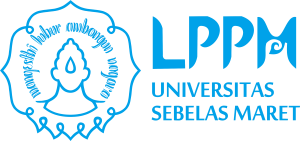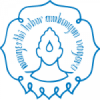Key Word: Purwoceng (Pimpinella pruatjan), manure, mychorriza, stigmasterol and sitosterol
by: Amalia T Sakya, Ahmad Yunus, Muji Rahayu
In the second year, the research aims to obtain the good quality of purwoceng seed through tissue culture and get development area of purwoceng (Pimpinella pruatjan) outside their natural habitat by modifying the growth environment through the use of various manure and mycorrhizal. Laboratory studies conducted at the Laboratory of Plant Physiology and Biotechnology of Agriculture Faculty of Agriculture UNS Surakarta. Field research was conducted at two locations, namely in Tawangmangu (±1805 m asl) dan Selo (± 1500 m asl), Boyolali in Central Java and the experiment was conducted starting in March to November 2010. Tissue culture research consist of three studies there were adventitious shoot culture, axillary buds culture and callus culture with modifications of growth regulators (NAA and BAP). The experimental design used using a completely randomized design (CRD) with 3 replications Factorial pattern. Observations were done on: the formation of callus, callus differentiation, number of shoots, leaf number, number of roots, and the number of plantlets. Field research consisted of two kinds of studies namely the kind of manure and the dosage of mycorrhiza inoculation, and the kind of mycorrhiza and the dosage of manure. The first study consisted of two treatments that were the kind of manure that consist of 4 level i.e. without manure, chicken manure, goat manure and cow manure and the dosage of inoculation mycorrhiza that consist of 4 level namely 0, 5, 10 and 15 g/plant. The second study also consisted of two treatments that were the kind of mycorrhiza that consist of 3 levels that were without mycorrhiza, Glomus sp, and Schleroderma sp and the dosage of manure that consist of 4 level namely 0, 10, 20 and 30 ton/ha. Each of combinations was repeated 3 times. The research was arranged on factorial design based on completely randomized design (CRD). Observations were done on percentage of mycorrhizal infection, leaf area, length and volume root, fresh and dry weight, stigmasterol and sitosterol content. Research to obtain tissue culture consisted of three experiments the culture experiment adventitious shoot culture, experimental culture of axillary buds, callus culture experiment with modifications of growth regulators (NAA and BAP). The research was arranged on factorial design based on a completely randomized design (CRD) with 3 replications. Observations were done on: the formation of callus, callus differentiation, number of shoots, leaf number, number of roots, and the number of plantlets.
From the observation of the research can be concluded that (1) Application cow manure up to a dose of 30 tonnes / ha increased plant dry weight purwoceng in Selo and Tawangmangu, (2) Growth of purwoceng up to age 12 weeks after planting in Selo and Tawangmangu increased with the inoculation mycorrhizae, (3) Effective mycorrhizal inoculation for purwoceng is Glomus sp, (4) Tawangmangu and Selo can be used as a development area of purwoceng with the manure addition, (5) The content of stigmasterol range in 0.08 to 0.13% and sitosterol ranged in 0.11 to 0.21%

